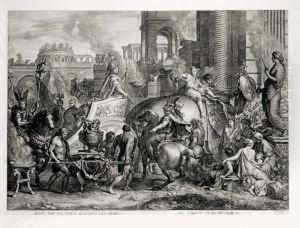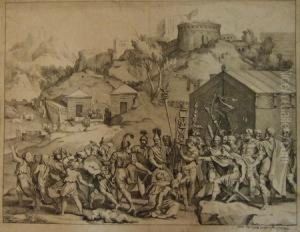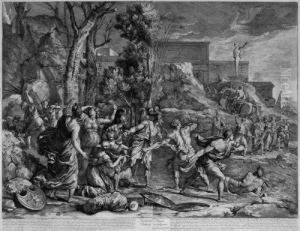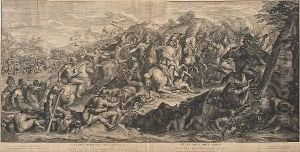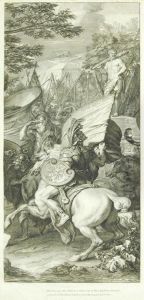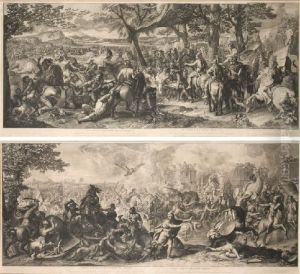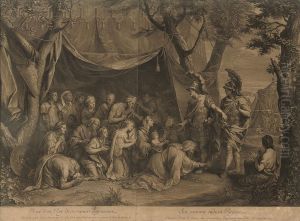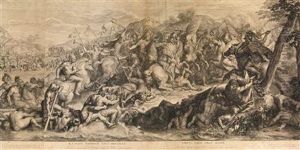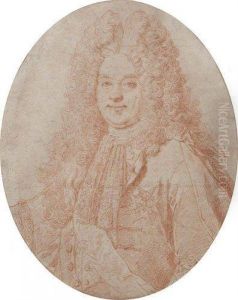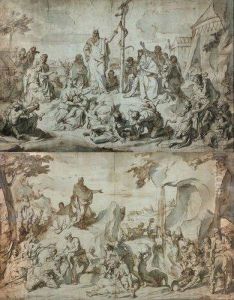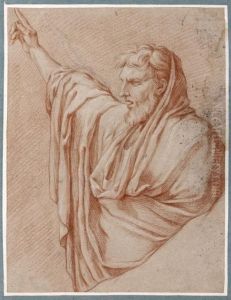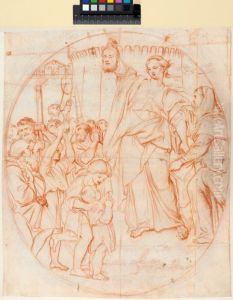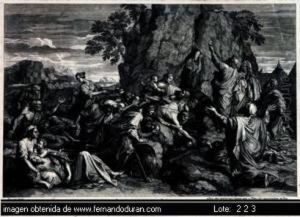Gerard Audran Paintings
Gérard Audran, born in Lyon, France, in 1640, was a prominent French engraver of the 17th century, celebrated for his mastery in reproducing paintings as engravings. Coming from a family deeply rooted in the arts, Audran was the third son of Claude Audran, a painter, and the brother of the painters Claude Audran II and Charles Audran, establishing a strong artistic lineage that would influence European art.
Audran's early life was steeped in the artistic environment of Lyon, but it was his move to Paris that marked the beginning of his significant contributions to the art world. In Paris, he became a pupil of the renowned engraver François Girardon, who introduced him to the techniques and subtleties of high-quality engraving. Audran's talent quickly became apparent, and he soon embarked on a journey to Rome, which was then the heart of the artistic Renaissance, to further his studies and skills.
In Rome, Audran was deeply influenced by the works of the great masters, particularly the Carracci family, whose style would leave a lasting impression on his engravings. His prowess in capturing the essence of paintings and translating them into engravings earned him widespread acclaim. His reproductions of the Carracci's works, among others, were celebrated for their accuracy and beauty, bridging the gap between original artworks and accessible reproductions for the wider public.
Audran's most significant contribution to art history was his series of engravings based on the paintings of the French painter Charles Le Brun, the leading court painter during the reign of Louis XIV. This series, titled 'Les Grandes Batailles du Roi' (The Great Battles of the King), depicted the military victories of Louis XIV and was commissioned by the king himself. These engravings were not only artistic triumphs but also served as propaganda, glorifying the king's achievements and solidifying Louis XIV's image as a victorious and powerful ruler.
Returning to Paris, Audran continued to work and thrive, becoming one of the most sought-after engravers of his time. His style, characterized by a delicate balance between detail and the overall effect, set a new standard for engraving, influencing the generation of engravers that followed. His works were not just reproductions but were considered artworks in their own right, contributing significantly to the dissemination of the Baroque style across Europe.
Gérard Audran passed away in Paris in 1703, leaving behind a legacy that had a profound impact on the art of engraving. His approach to engraving, which combined meticulous attention to detail with an overarching vision for each piece, ensured that his works remained highly valued by collectors and art enthusiasts. Today, Audran's engravings are studied not only for their artistic merit but also for their role in art history, serving as a bridge between the masterpieces of the Renaissance and Baroque periods and the wider public.
